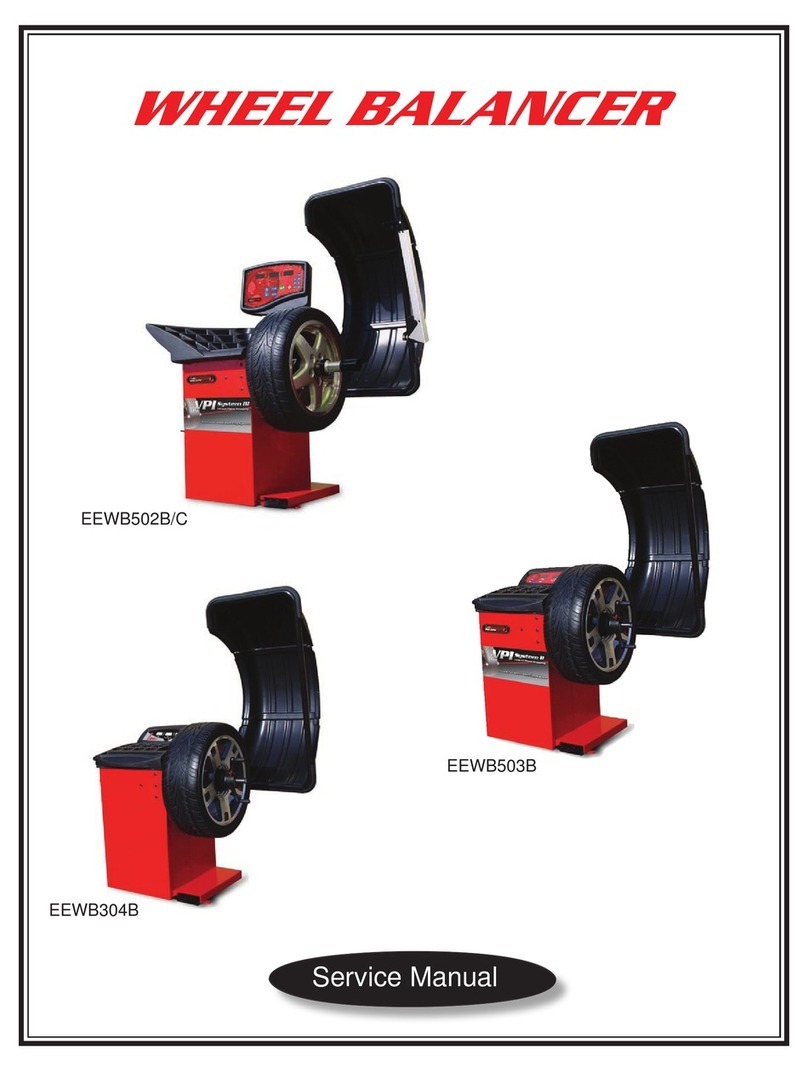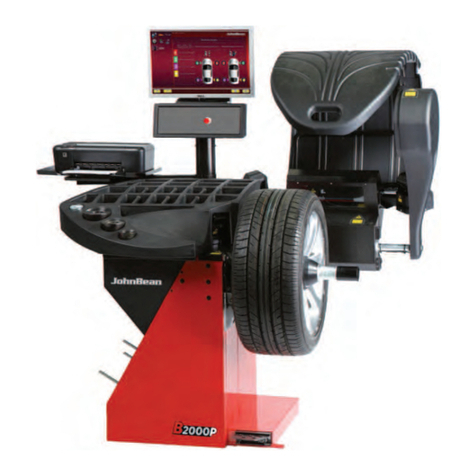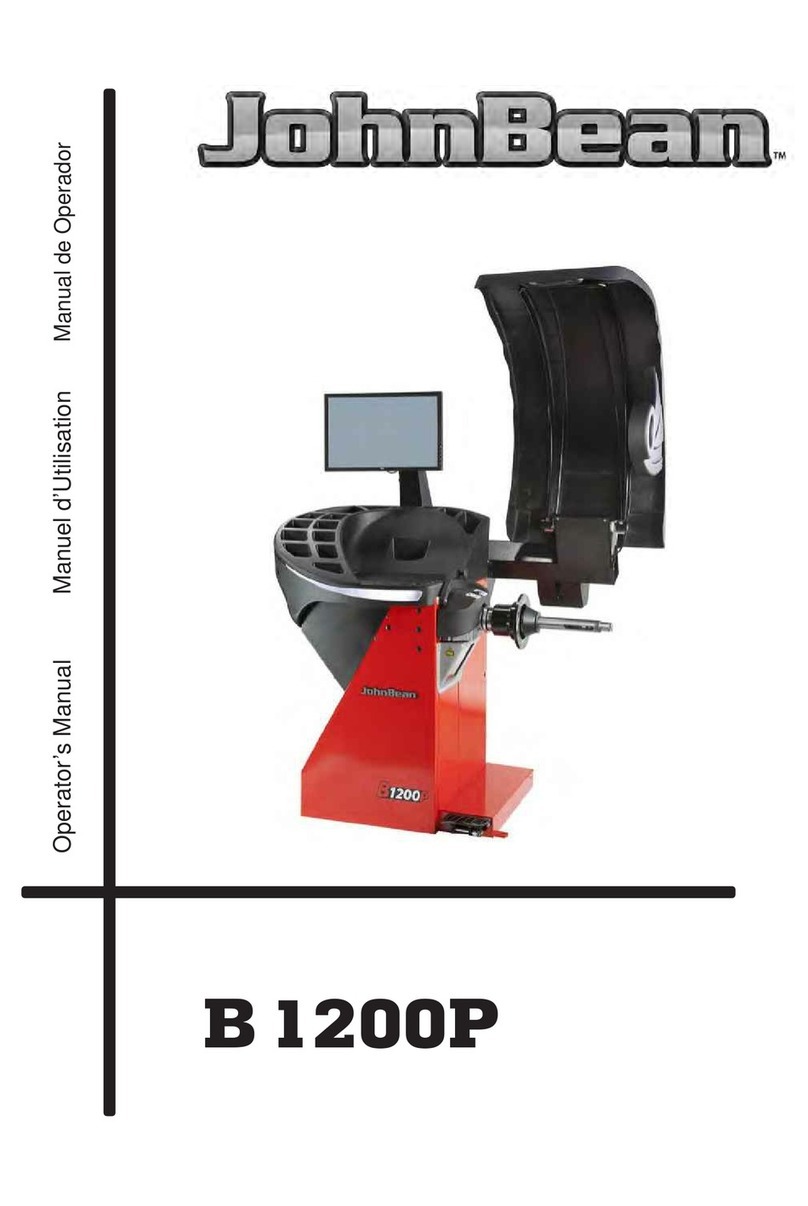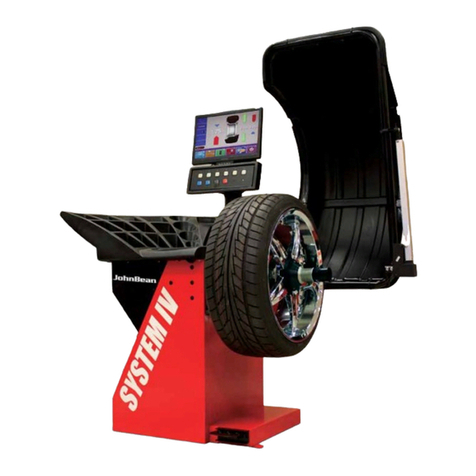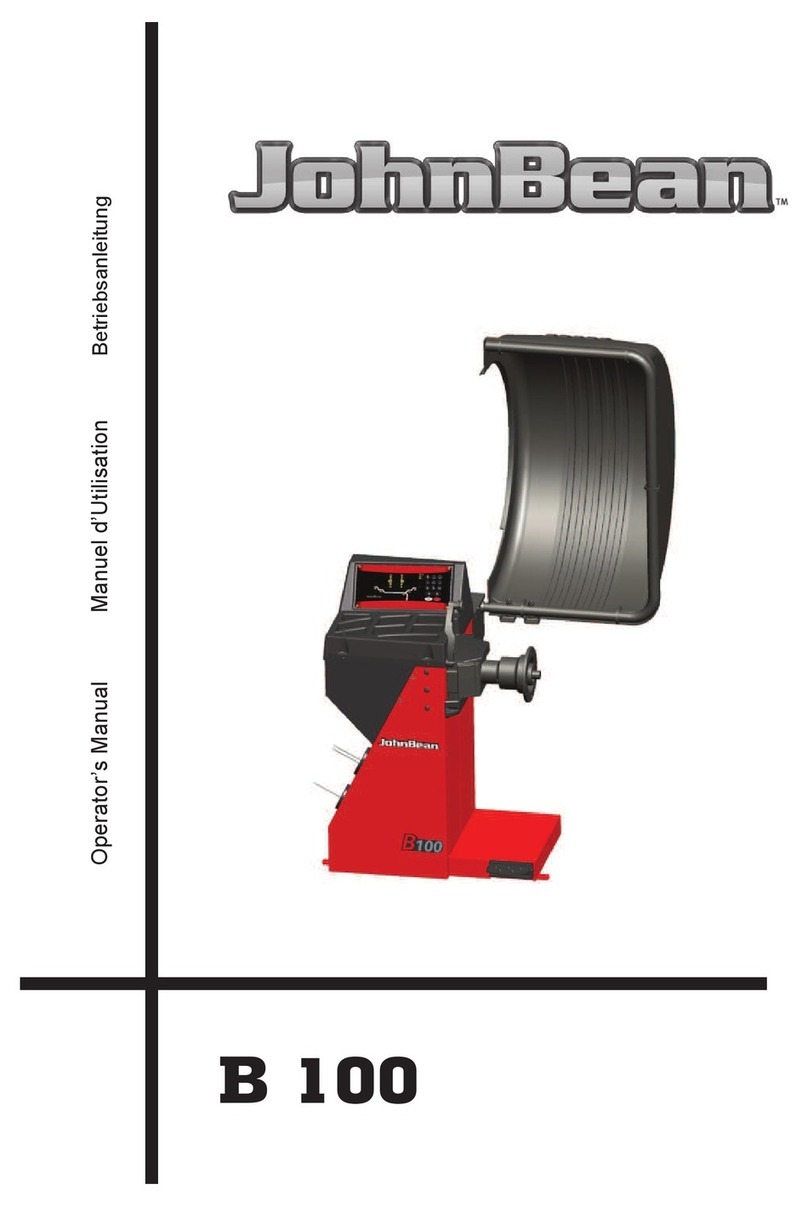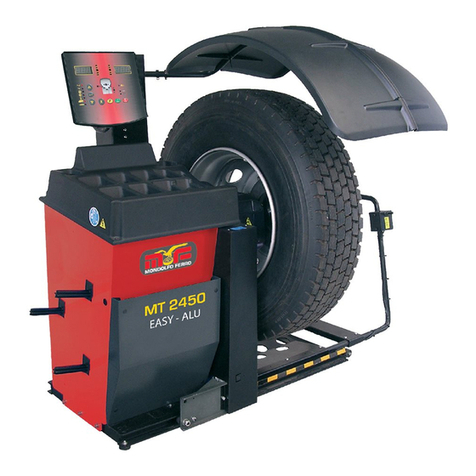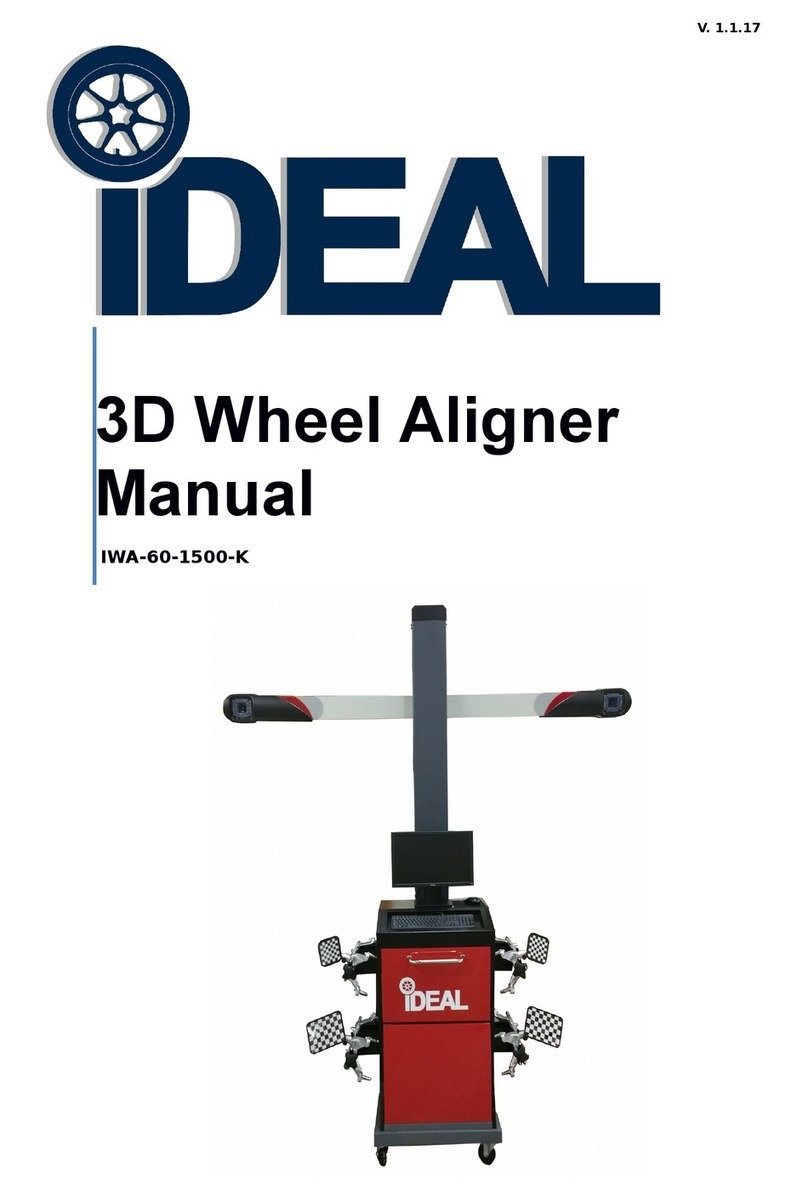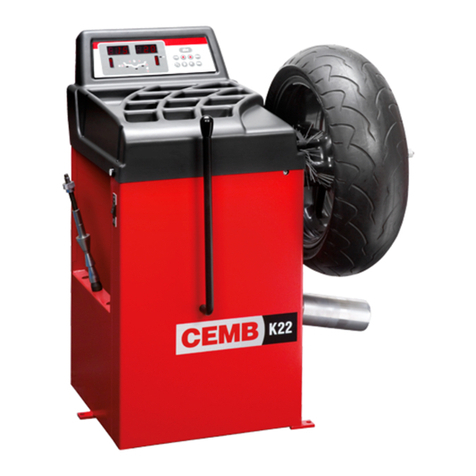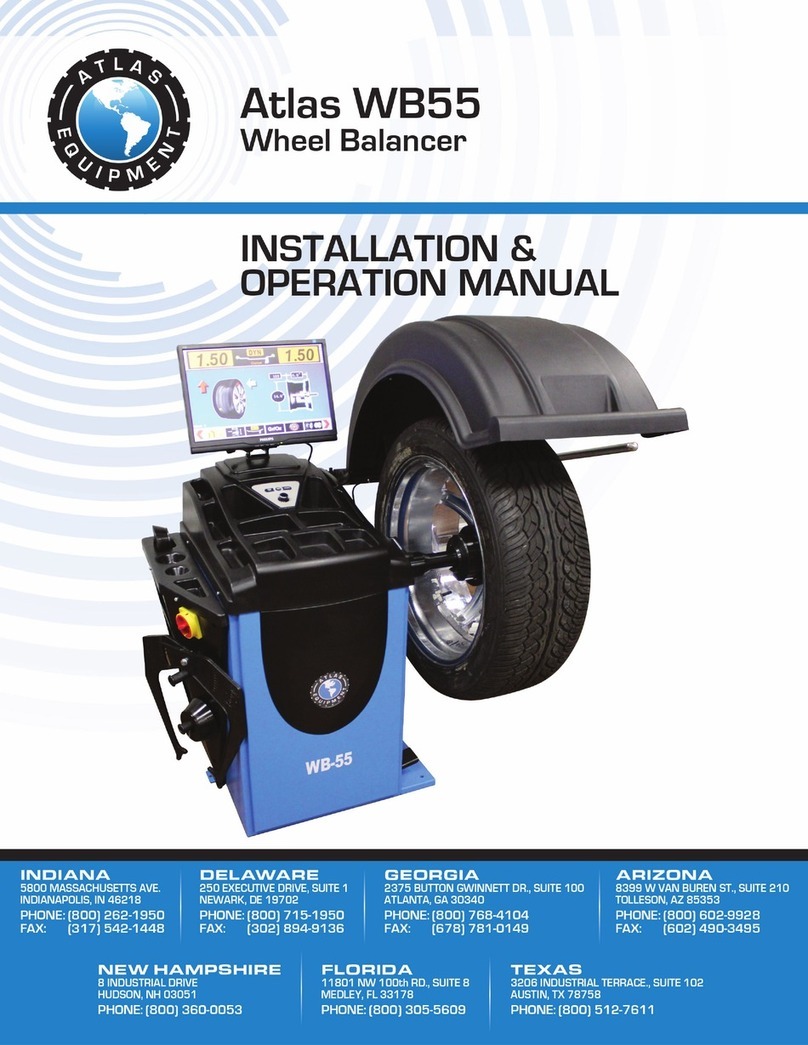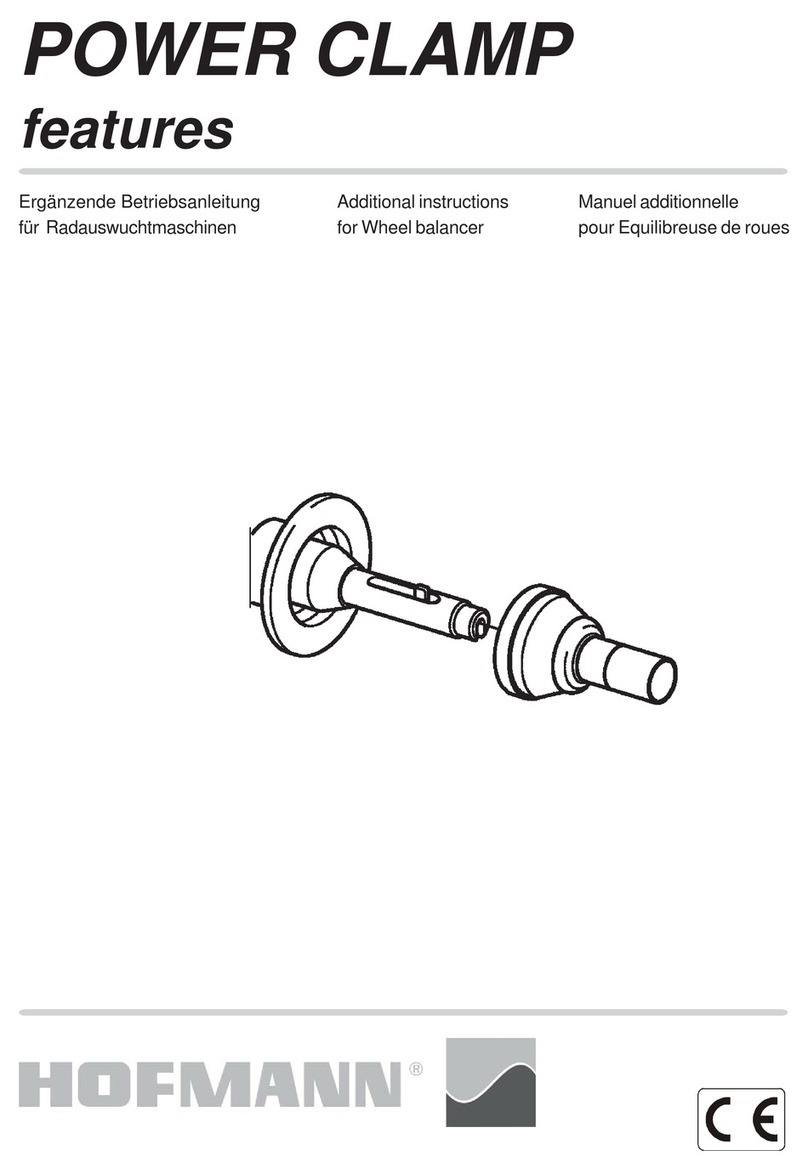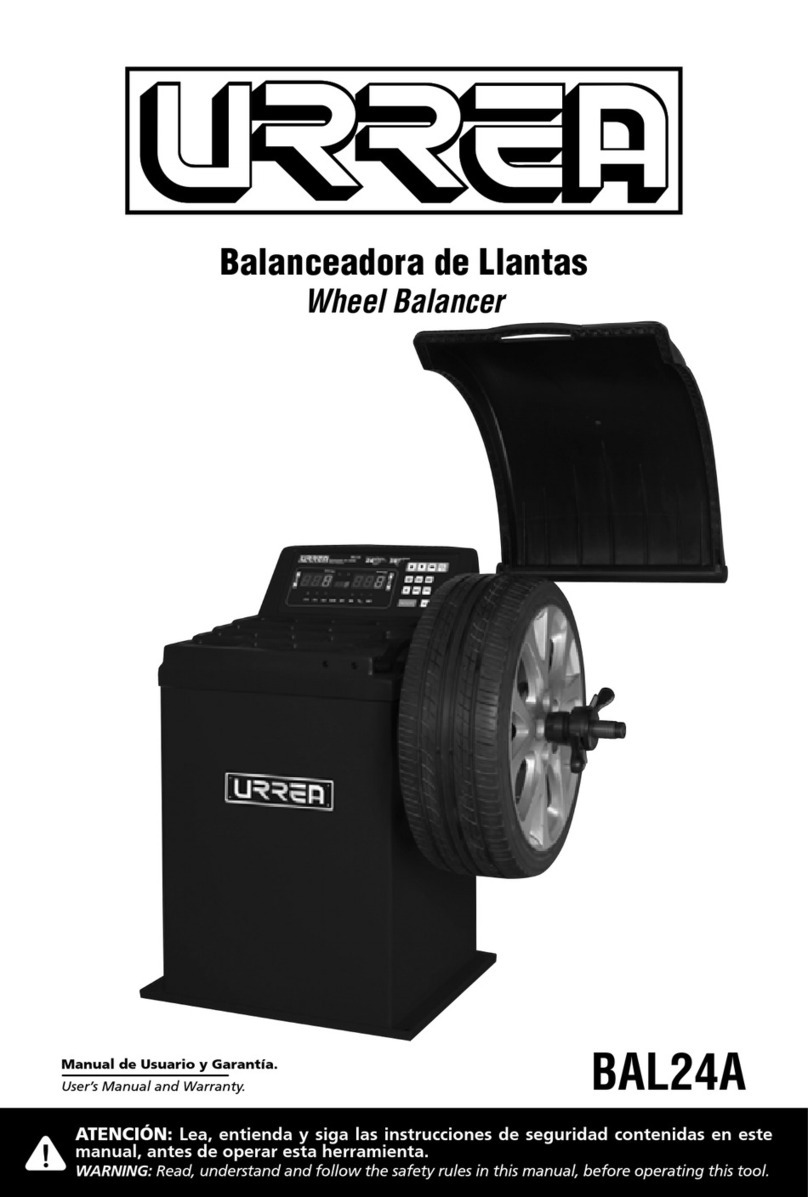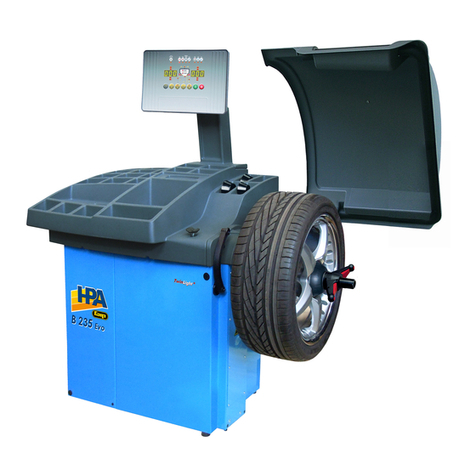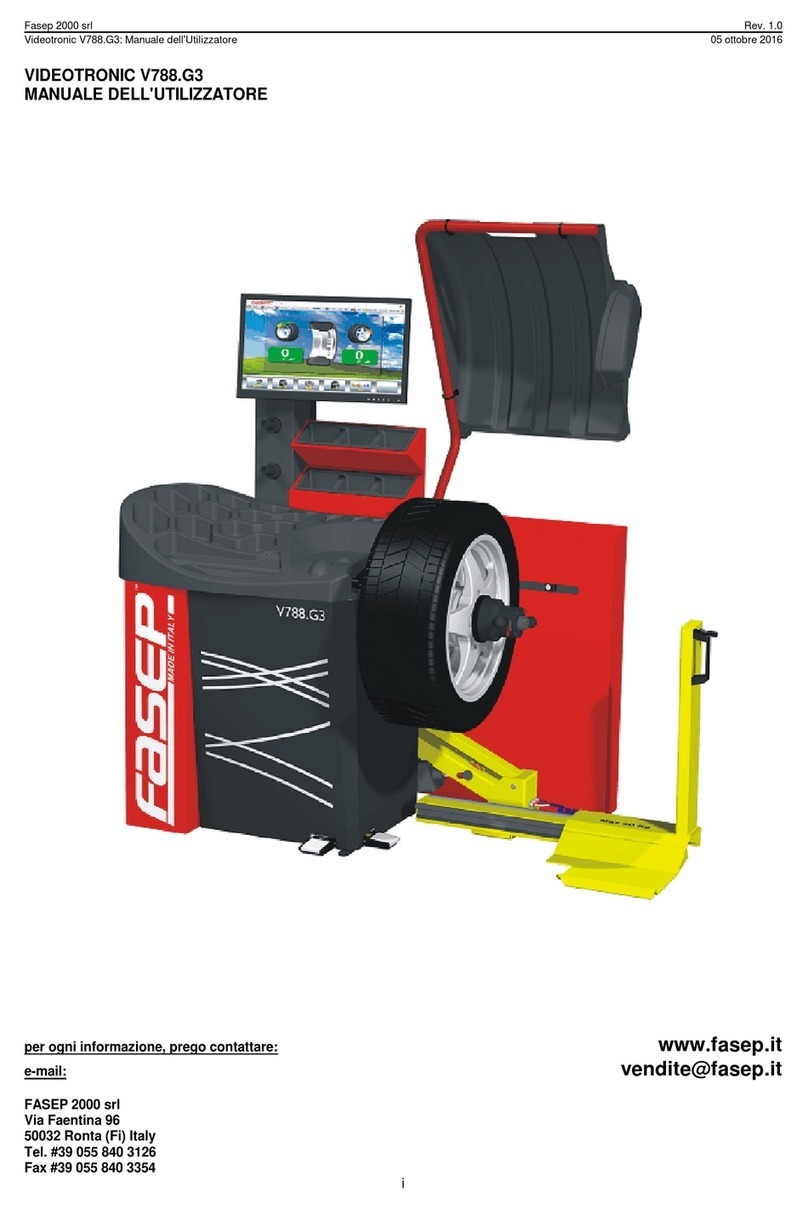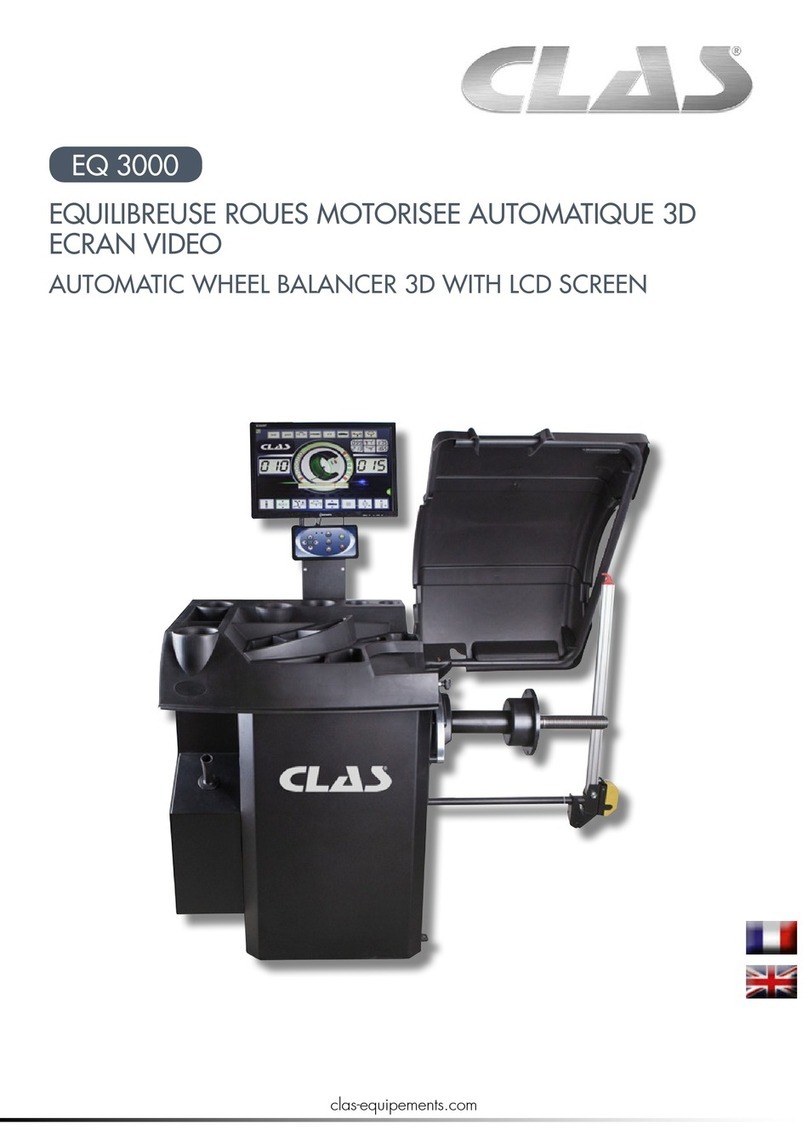
Page 5
John Bean VPI System I Operators Manual
1.3 VPI System I SPECIFICATIONS
Computerized digital wheel balancer for car, light truck
wheels.
Weight Imbalance Accuracy .1 oz / 2 grams
Weight Placement Resolution ± .7 degrees
Weight Imbalance Resolution:
Roundoff Mode .25 oz / 5 grams
Non-Roundoff Mode .05 oz / 1 gram
Max. Shaft Weight Capacity 120 lbs / 54 kg
Max.Tire Diameter 44" / 1117 mm
Rim Width Capacity 1.5"-15" / 76 mm - 406 mm
Max. Tire Width 19” / 482 mm
Rim Diameter Capacity 8"-20" / 152 mm-660 mm
Balancing Cycle Time. 7 seconds or less
Shaft Speed at calculation >100 RPM
Electrical 115vac, 1ph, 50-60Hz, 8A
Required Work Area 54” x 52” (1372 x 1321 mm)
Shipping Weight, complete 325 lbs/147kg
ShippingDimensions 52.75”h 41.5”w 37”d
Machine Dimensions 54”h 45”w 48.5”d
Actual Weight with Accessories 309 lbs / 140 kg
Operating Temperature Range 32-122F / 0-50C
1.4 FEATURES
ACCURACY
• Weight placement accuracy to as low as ± .7°
• Weight imbalance accuracy to 2 grams.
• Self test check with every power up cycle.
• Fast operator calibration.
• Pre-programmed Error Codes indicate procedural
errors or safety concerns.
SPEED and DURABILITY
• Automatic distance entry. Simply touch the distance
arm to the wheel, the distance parameter is auto-
matically entered.
• Quickclamp speednut reduceswheel mountingtime.
• Capturedback springeliminateshaving tohandle the
backing spring.
• Quick cycle time.
• Automatic recalculation if weight positions are
changed. No need for re-spinning the wheel.
• Common 40 mm diameter mounting shaft.
• Weight pocket storage tray.
• Easy-to-Read Data display.
• Easy weight tray access.
SOFTWARE VERSATILITY
• Both dual weight Dynamic and single weight Static
capability.
• MatchBalance programfor reducingweightrequired.
• Built-in spin counter for monitoring balancer
productivity.
• Service code access to all Balancer electronic func-
tions for fast, easy diagnosis.
• Operator selectable roundoff mode.
• 5 Aluminum Modes
• Alu-S mode
• Hidden Weight (Spoke) mode
• Split Weight mode
